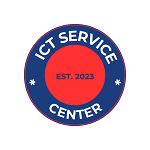To turn off the touchscreen on a Dell laptop, go to the Device Manager, locate the HID-compliant touch screen option, right-click on it, and select Disable. Now the touchscreen will be turned off on your Dell laptop.
Dell laptops are equipped with touchscreens for enhanced user experience, but there are instances when you might prefer to disable this feature. Whether you want to avoid accidental inputs or simply prefer using a mouse or touchpad, turning off the touchscreen can be beneficial.
In this guide, we will walk you through the steps to disable the touchscreen on your Dell laptop. By following these simple instructions, you will be able to easily disable the touchscreen and regain full control over your device. Let’s dive in and learn how to turn off the touchscreen on a Dell laptop.

Understanding Your Dell Laptop’s Touchscreen
Learn how to easily turn off the touchscreen on your Dell laptop, allowing for a more traditional computing experience without accidental taps or swipes disrupting your workflow. Take control of your laptop’s touchscreen and enhance your productivity today.
Understanding Your Dell Laptop’s Touchscreen
In today’s digital age, touchscreen technology has become increasingly popular, revolutionizing the way we interact with our devices. Dell laptops equipped with touchscreens offer an enhanced user experience, allowing you to intuitively navigate through your device with a simple tap or swipe of your finger. In this article, we will delve into the basic components of a Dell touchscreen laptop and explore the functionality and use-cases of this innovative feature.
Basic Components Of A Dell Touchscreen Laptop
To truly understand the touchscreen capabilities of your Dell laptop, it’s crucial to familiarize yourself with its basic components. A Dell touchscreen laptop is composed of three primary elements: the display panel, the touch-sensitive layer, and the touch controller. Let’s take a closer look at each of these components to gain a deeper understanding.
-The Display Panel:
This is the screen of your Dell laptop that showcases all your content, whether it’s websites, documents, or videos. The display panel plays a vital role in providing the visual interface for your touchscreen interactions. Equipped with advanced technology, the panel is designed to offer high resolution and vibrant colors, making your viewing experience a delight.
-The Touch-Sensitive Layer:
Situated on top of the display panel, the touch-sensitive layer is responsible for detecting and responding to physical touches. This layer is made up of a network of sensors that can detect the electrical charges created by your fingertips. Once a touch is detected, the touch-sensitive layer relays this information to the touch controller for further processing.
-The Touch Controller:
Acting as the bridge between your touch-sensitive layer and the rest of the laptop’s components, the touch controller processes the touch inputs received and translates them into commands that can be understood by your operating system. This controller ensures that your Dell laptop accurately registers your touches and executes the corresponding actions promptly.
The Functionality And Use-cases Of A Touchscreen
The functionality of a touchscreen on a Dell laptop extends beyond its role as a mere input method. It opens up a world of possibilities and enhances certain tasks, making them more intuitive and efficient. Let’s explore some of the use-cases where the touchscreen functionality shines through:
-Productivity and Multitasking:
With a touchscreen, you can easily navigate through various applications and windows, seamlessly switching between tasks with a simple tap or swipe. This enables a more productive and efficient workflow, particularly when you need to handle multiple tasks simultaneously.
-Creative and Artistic Expression:
Drawing and graphic design become more immersive with a touchscreen. The ability to directly interact with your digital canvas allows for precise and natural strokes, providing artists and designers with a new level of freedom and creativity.
-Entertainment and Media Consumption:
Whether you’re watching movies, playing games, or browsing through photos, a touchscreen offers a more engaging and interactive experience. Swipe through your media library, pinch to zoom in on details, and tap to play – all at your fingertips.
-Navigation and Accessibility:
For users with certain mobility impairments, a touchscreen can significantly enhance accessibility. It provides a more intuitive and effortless method of navigating through the laptop’s interface, eliminating the need for a physical keyboard and mouse.
In conclusion, understanding the components and functionalities of your Dell laptop’s touchscreen is crucial to fully harness its capabilities. From enabling multitasking and creative expression to enhancing entertainment and accessibility, the touchscreen feature empowers you to interact with your device in a more natural and efficient way. Embrace the convenience and versatility of your Dell touchscreen laptop, and explore the vast possibilities it offers in various aspects of your digital life.
Preparing To Disable Touchscreen
To turn off the touchscreen on a Dell laptop, follow these steps: Go to the Device Manager, expand the Human Interface Devices category, locate the touchscreen driver, right-click it, and select Disable. This will deactivate the touchscreen functionality on your Dell laptop.
Ensure All Work Is Saved
Before disabling the touchscreen on your Dell laptop, it is vital to ensure that all your work is saved. Saving your work will prevent any potential data loss or disruptions during the process. It is always a good practice to save your files regularly, especially before making any system changes. This simple step can help you avoid frustrating situations and keep your important data safe.
Close Unnecessary Applications
Prior to disabling the touchscreen feature, it is recommended to close any unnecessary applications or programs running in the background. This will help ensure a smooth and hassle-free process. Closing unnecessary applications allows the laptop’s resources to be properly utilized for the required changes and minimizes the chances of any conflicts or errors occurring.
Understanding Why And When You Might Want To Disable The Touchscreen
Disabling the touchscreen functionality on your Dell laptop can be useful in various situations. Here are a few common scenarios where you might want to consider disabling the touchscreen:
- To prevent accidental touches or cursor movements while using a mouse or external pointing device.
- When performing tasks that require precise clicking or typing, such as graphic design or coding.
- When using applications that are not optimized for touchscreen interactions.
- To conserve battery life, as the touchscreen can consume more power compared to traditional input methods.
Understanding why and when to disable the touchscreen can help you tailor your laptop’s settings to your specific needs, enhancing your overall user experience.
How To Turn Off The Touchscreen Feature
If you find the touchscreen feature on your Dell laptop to be more of a distraction rather than a convenience, you can easily turn it off. Disabling the touchscreen can help improve battery life, prevent accidental touches, and enhance the overall usability of your laptop. In this article, we will guide you through different methods to disable the touchscreen feature on your Dell laptop, along with troubleshooting common issues that may arise during the process.
Different Methods To Disable The Touchscreen/
There are multiple ways to disable the touchscreen feature on your Dell laptop. Here are three common methods:
- Using Device Manager
- Using the Windows 10 Settings
- Disabling the touchscreen driver
Step By Step Guide On The Most Common Method/
One of the most straightforward methods to disable the touchscreen feature is by using the Device Manager. Follow these step-by-step instructions:
- Press the Windows key + X on your keyboard to open the power user menu.
- From the menu, select Device Manager.
- In the Device Manager window, locate Human Interface Devices and click on the arrow next to it to expand the category.
- Look for a device name that includes “touchscreen” or “HID-compliant touch screen”.
- Right-click on the device and select Disable from the drop-down menu.
- A confirmation dialog box will appear. Click Yes to disable the touchscreen.
- Once disabled, the touchscreen feature will be turned off. To re-enable it, simply follow the same steps and select Enable instead of Disable.
Troubleshooting Common Issues During The Process/
While disabling the touchscreen feature on your Dell laptop is generally straightforward, you may encounter some common issues. Here are a few troubleshooting tips:
| Issue | Solution |
|---|---|
| The “Disable” option is grayed out. | Make sure you are logged in as an administrator. If not, switch to an administrator account and try again. |
| The touchscreen is still responsive after disabling it. | Restart your laptop and check if the touchscreen remains disabled. If the issue persists, update your laptop’s drivers or seek assistance from Dell support. |
| Disabling the touchscreen affects other devices. | If disabling the touchscreen also disables other input devices such as the touchpad or pen, enable “HID-compliant touch pad” or other relevant devices in Device Manager. |
By following these simple steps and troubleshooting tips, you can easily turn off the touchscreen feature on your Dell laptop. Disabling the touchscreen can provide a smoother and distraction-free computing experience, tailored to your needs.
Accessing Device Manager On A Dell
When it comes to using a Dell laptop, accessing the Device Manager is essential for managing various hardware settings, and this includes turning off the touchscreen feature. By accessing the Device Manager, you can easily locate the touchscreen device and disable it. In this blog post, we will guide you through the process of accessing the Device Manager on a Dell laptop, allowing you to turn off the touchscreen hassle-free.
Navigating To Device Manager Via The Start Menu
To access the Device Manager on your Dell laptop through the Start menu, follow these simple steps:
- Click on the Start button located at the bottom-left corner of your desktop screen.
- Type Device Manager in the search field. As you type, the search results will appear.
- Click on the Device Manager option in the search results to open the Device Manager window.
Using Shortcut Keys To Access System Properties
If you prefer using shortcut keys, you can access the Device Manager by following these steps:
- Press the Windows key on your keyboard to open the Start menu.
- Type sysdm.cpl and press Enter.
- This will open the System Properties window.
- Click on the Hardware tab, and then click on the Device Manager button.
Locating The Touchscreen Device In The Human Interface Devices Section
Once you have successfully opened the Device Manager, follow these steps to locate the touchscreen device and disable it:
- In the Device Manager window, expand the Human Interface Devices category by clicking on the arrow next to it.
- Look for a device that includes the word “Touchscreen” or “HID-compliant touchscreen” in its name.
- Right-click on the touchscreen device and select Disable device from the context menu that appears.
- A confirmation dialog box will appear. Click on Yes to disable the touchscreen.
By following these simple steps, you can easily access the Device Manager on your Dell laptop and disable the touchscreen function. This can be useful in situations where you want to avoid accidental touches or simply prefer using a mouse or touchpad for navigation. Feel free to experiment with re-enabling the touchscreen in the Device Manager if needed.
Alternative Methods For Disabling Touchscreen
Disabling the touchscreen on a Dell laptop can be necessary for a variety of reasons. Whether you want to prevent accidental touches while typing or simply prefer using a mouse or touchpad, there are several alternative methods available. In this section, we will explore three options for disabling the touchscreen on your Dell laptop: through BIOS settings, using third-party software solutions, and differentiating between temporarily disabling and permanently turning off the touchscreen.
Disabling Through Bios Settings
If you prefer a hardware-based solution, disabling the touchscreen through BIOS settings is a viable option. BIOS, which stands for Basic Input/Output System, is firmware embedded on the motherboard that allows you to configure various hardware settings. Here’s how you can disable the touchscreen through BIOS:
- Start your Dell laptop and quickly press the designated key to access the BIOS settings. This key varies depending on the model and may be F2, F12, or Del.
- Once you are in the BIOS settings, navigate to the “Advanced” or “System Configuration” tab.
- Look for an option related to the touchscreen, such as “Touchscreen” or “HID-compliant touch screen”. Select this option.
- Disable the touchscreen by selecting “Disable” or a similar option.
- Save the changes and exit the BIOS settings. Your Dell laptop’s touchscreen should now be disabled.
Using Third-party Software Solutions
If altering BIOS settings seems complex or you prefer a more user-friendly approach, using third-party software solutions can be an efficient alternative. These software applications provide easy-to-use interfaces to enable or disable the touchscreen functionality. Here are a few popular third-party software solutions for disabling the touchscreen on your Dell laptop:
- Touch-Disabler: A lightweight and simple utility that allows you to disable and re-enable the touchscreen with just a few clicks.
- TouchMe Gesture Studio: This software not only allows you to disable the touchscreen but also enables you to customize touch gestures for specific actions. It provides advanced features for power users.
- Touchpad Blocker: Although primarily designed for touchpad blocking, this software also offers an option to disable the touchscreen temporarily or permanently.
Temporarily Disabling Vs. Permanently Turning Off The Touchscreen
When deciding on whether to temporarily disable or permanently turn off the touchscreen, it’s essential to consider your specific needs. Keep in mind that temporarily disabling the touchscreen allows you to re-enable it when necessary, while permanently turning it off will require additional steps to reverse the process. Consider the following factors:
- Usage scenarios: If you occasionally utilize the touchscreen and want the flexibility of reactivating it, temporary disabling is recommended.
- Preference: On the other hand, if you rarely or never use the touchscreen and prefer to rely solely on the mouse or touchpad, permanently turning off the touchscreen may be the best choice.
Now that you have explored alternative methods for disabling the touchscreen on your Dell laptop, you can choose the option that best suits your needs. Whether it’s through BIOS settings or using third-party software solutions, you can easily prevent unwanted touch interactions and enhance your laptop experience.

Re-enabling Your Dell’s Touchscreen
Are you experiencing touchscreen issues on your Dell laptop? Perhaps you previously disabled the touchscreen feature and now want to re-enable it. In this section, we will guide you through the steps to reactivate the touchscreen function on your Dell laptop. We will also explain how to verify the touchscreen functionality post-enabling. Additionally, we will discuss instances when it may be necessary to seek professional assistance for touchscreen issues. So, let’s dive in and get your touchscreen back up and running!
Steps To Reactivate The Touchscreen Feature
Follow these simple steps to re-enable the touchscreen feature on your Dell laptop:
- Start by navigating to the “Device Manager” on your Dell laptop. You can do this by right-clicking on the “Start” menu and selecting “Device Manager” from the context menu.
- In the Device Manager window, locate and expand the “Human Interface Devices” category.
- Look for an entry that includes the word “touchscreen” or “HID-compliant touchscreen.” Right-click on this entry and select “Enable” from the drop-down menu.
- Wait for the driver to initialize and the touchscreen function to be reactivated.
- Once the process is complete, restart your Dell laptop to ensure the changes take effect.
Verifying Touchscreen Functionality Post-enabling
After re-enabling the touchscreen feature, you’ll naturally want to ensure that it’s functioning properly. Here’s how you can verify the touchscreen functionality:
- On your Dell laptop, go to the desktop or any application where you typically use the touchscreen.
- Try tapping, swiping, or using any touch gestures on the screen to check if the touchscreen responds accurately and swiftly.
- Open a web browser and attempt to click on links or interact with elements using the touchscreen. Make sure the response is smooth and accurate.
- If the touchscreen is not responding as expected or you notice any issues, proceed to the next section for further assistance.
When To Consider Professional Assistance For Touchscreen Issues
While re-enabling the touchscreen feature on your Dell laptop should resolve most issues, there might be situations where professional assistance is necessary. Consider seeking help from a technician in the following scenarios:
- If the touchscreen remains unresponsive after reactivation.
- If you encounter error messages related to the touchscreen driver or hardware.
- If your Dell laptop experiences frequent crashes or freezes when using the touchscreen.
- If you notice physical damage, such as cracks or unresponsive areas on the touchscreen panel.
Remember, professional assistance can provide solutions to more complex touchscreen problems and ensure the optimal performance of your Dell laptop’s touchscreen. It’s better to seek help from experts who have the knowledge and experience to diagnose and fix these issues.
Frequently Asked Questions Of How To Turn Off The Touchscreen On A Dell Laptop
How Do I Turn Off The Touchscreen On My Laptop?
To turn off the touchscreen on your laptop, go to the “Device Manager” in your computer’s settings. Locate the “Human Interface Devices” category, find the touchscreen driver, and right-click on it. Then select “Disable” from the drop-down menu. This will disable the touchscreen feature.
How Do I Turn On The Touchscreen On My Dell Laptop Windows 11?
To turn on the touchscreen on your Dell laptop with Windows 11, go to the Start menu and open Settings. Click on the System category, then select Display on the left sidebar. Scroll down and toggle on the “Use your finger as an input device” option.
How Do I Disable The Touchpad On My Dell Laptop?
To disable the touchpad on your Dell laptop, go to the device’s settings, select “Mouse” or “Touchpad,” and then click on “Disable. “
How Do I Fix My Touch Screen On My Dell Laptop?
To fix the touch screen on your Dell laptop, first, try restarting your computer and updating the drivers. If that doesn’t work, check the device manager for any issues or conflicts. You can also try calibrating the touch screen or performing a system restore.
If all else fails, contact Dell support for further assistance.
Conclusion
Disabling the touchscreen on your Dell laptop is a simple process that can enhance your user experience. By following the steps outlined in this guide, you will be able to turn off the touchscreen feature effortlessly. Whether you are looking to optimize your productivity or prevent accidental touch inputs, this tutorial has provided you with the necessary instructions.
Say goodbye to unintentional taps and swipes, and enjoy a seamless laptop usage experience.

